The Gothic Revival continues! And this year, Southern Gothic joins the fold in our roundup of the most haunted, atmospheric stories of 2022. Here’s a quick definition of what Gothic fiction does, courtesy of Faye Snowden’s wonderful article: “Through stories of transgression and depictions of the grotesque, [Gothic fiction] evokes anxiety in the reader, leaving them to question society’s institutions, religions, politics, familial and other relationships…” While European Gothic novels mostly featured women in distress in dilapidated houses, Snowden distinguishes two particularly American evolutions to Gothic fiction once it crosses the pond in the 19th century:
“The first is the return of ideas, brutal realities, and anxieties that have been repressed, especially those related to the dichotomies on which the country was founded (e.g. freedom in the midst of slavery). This return of the repressed usually calls into question the notion of the American Dream, and wreaks havoc on the present. The second is race, or fear of the other, which becomes even more pronounced in the Southern Gothic narrative.”
I see these markers in every one of the books below, including two that feature Gothic in a Latin American historical context. Only a surface reading could dub these novels “escapist;” to read them closely is to remember the bloody building blocks of our historically haunted society.
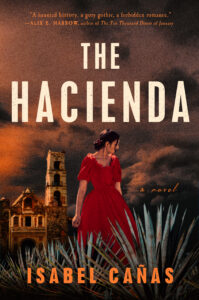
Isabel Cañas, The Hacienda
(Berkley)
Isabel Canas takes the gothic novel to the haciendas, just as Sylvia Moreno-Garcia’s Mexican Gothic took on the history of silver mining and imperialism. In The Hacienda, set just after the Mexican War for Independence, heroine Beatriz has been dispossessed of her family fortune after her father’s fall from political grace and subsequent execution. She finds a husband she feels will elevate her status and protect her mother from persecution, but strange happenings at her new estate and rumors of hauntings threaten to derail her new life, and a sexy local priest who moonlights as a witch is her only hope of survival. Lush, beautiful, and completely deserving of the comparisons to Rebecca, The Hacienda is essential reading in the gothic revival.

T. Kingfisher, What Moves The Dead
(Tor)
Set in that 19th century placeholder for obscure nations, Ruritania, T. Kingfisher’s What Moves The Dead slyly reinvents The Fall of the House of Usher as a fungalpunk reckoning. An old soldier heads to a dilapidated castle to attend to their dying friend, but strange occurrences in the decaying manor distract from the mission of comfort and raise specters from past battles. Perfect for those who enjoyed Silvia Moreno-Garcia’s Mexican Gothic and thought, “I’d like to read some more horror involving mushrooms.”
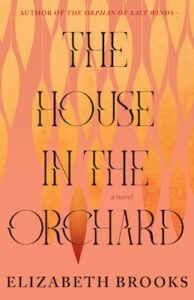
Elizabeth Brooks, The House in the Orchard
(Tin House)
The House in the Orchard is a richly-layered gothic novel with all the psychological penetrations that form is so celebrated for. We follow a WWII widow to a country estate in disrepair, and then a book is found—a young girl’s diary—and soon we’re thrown into another story, of an orphaned child trying to interpret her own trauma and the events of the adult world around her. The result is an exercise in disquiet, just as a good gothic novel should be, and a haunting tale of loss and discovery. –Dwyer Murphy, CrimeReads Editor-in-Chief

Alexis Henderson, House of Hunger
(Ace)
In this lush reimagining of the Elizabeth Bathory story, a young woman languishing in poverty in an industrial city gets a chance to become a Bloodmaiden to the elite aristocrats whose salacious appetites include a taste for the blood of their own constituents. Some Bloodmaidens go on to lucrative fortunes and comfortable retirements, but as Henderson’s heroine adjusts to her new life as Bloodmaiden to the most powerful aristocratic house in the kingdom, she soon realizes that being slowly consumed by those more powerful than you is rarely a recipe for long-term satisfaction.

Sarai Walker, The Cherry Robbers
(Harper)
Walker’s new novel unspools the history of Sylvia Wren, a New Mexico-based artist who is on the verge of being exposed by a dogged journalist turning up pieces of her past as a firearms heiress outrunning a dangerous family legacy. The story takes one interesting new turn after another, gathering into a heady mix of gothic fiction and incisive art thriller. –DM
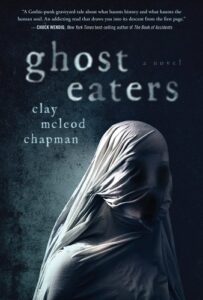
Clay McLeod Chapman, Ghost Eaters
(Quirk)
What if you could take a drug that showed you the souls of those who haunted you? And what if you took too much of that drug, and started seeing the dead everywhere? In Ghost Eaters, a group of college friends is left bereft when one of them overdoses, but taking a drug called Ghost may help them talk with their lost friend once more. Chapman sets his novel in Richmond, Virginia, and this Southern Gothic ghost story uses its setting well to explore the not-even-past history of the South.

Ashton Noone, Vicious Creatures
(Scarlet)
Vicious Creatures is bound to be one of the best debuts of the year. In this moody, atmospheric thriller, a woman returns to her hometown, hoping her ex-husband’s fear of the dark creatures that live in the woods surrounding will protect her and her daughter from his wrath. There, she reconnects with her best friend from high school, and the two grow closer to acknowledging their intense attraction to each other. Rural noir meets folk horror with queer characters? Sign me up!
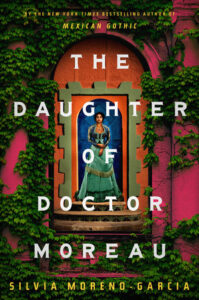
Silvia Moreno-Garcia, The Daughter of Doctor Moreau
(Del Rey Books)
I can’t get enough of Silvia Moreno-Garcia’s playful takes on classic genres. In her latest, the Island of Doctor Moreau gets a Yucatan-set treatment, steeped in sultry atmospherics and set during the lead-up to the Mexican Revolution as the hacienda system begins to crumple. Carlota Moreau loves her scientist father, whose injections keep her alive; she loves her fur-covered playmates, whose ailments can be ascribed to their mishmash of human and animal genes; she even cares for the drunken plantation overseer who facilitates the gruesome experiments. But her character was raised to be pampered, not tested, and her loyalties will soon face a breaking point as the goals of her father, his patron, and those they torture pull Carlota in opposite directions.
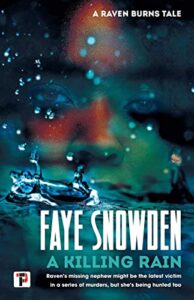
Faye Snowden, A Killing Rain
(Flame Tree Press)
Faye Snowden has skillfully crafted a dark Southern Gothic procedural featuring a desperate heroine who can’t outrun her past. When former detective (and daughter of a notorious serial killer) Raven Burns moves home to small-town Louisiana, she wants to start over in life, yet again. After all, she reinvented herself as a cop after a childhood as a killer’s accomplice. But soon enough, a serial killer, a kidnapping, and two men on her trail interfere with Raven’s best laid intentions. Snowden knows her gothic tropes, and knows how to keep the conventions of the genre feeling fresh and relevant. I’m hoping Snowden and Chapman’s well-received novels this year herald a new wave of Southern Gothic fiction.
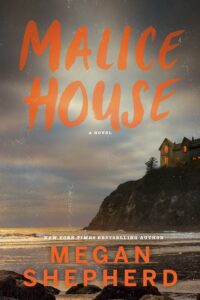
Megan Shepherd, Malice House
(Hyperion)
Haven Marbury is broke, stuck cleaning out her recently deceased father’s home in a depressing seaside town and unable to move on from a bad relationship without sufficient funds. She thinks she’s found the answer to her money problems when she comes across an undiscovered manuscript of rather disturbing short stories by her father, whose literary star was such that a previously unpublished collection should bring untold riches. Haven’s an illustrator, so she decides to illustrate the stories. But unfortunately for her (and fortunately for readers) those illustrations may be a portal to another world where nightmares are real and only waiting to cross into this one…An excellent addition to the growing gothic revival.
Eve Chase, The Birdcage (Putnam) · Catriona Ward, Little Eve (Tor Nightfire) · Emma Seckel, The Wild Hunt (Tin House) · Sunyi Dean, The Book Eaters (Tor)

















